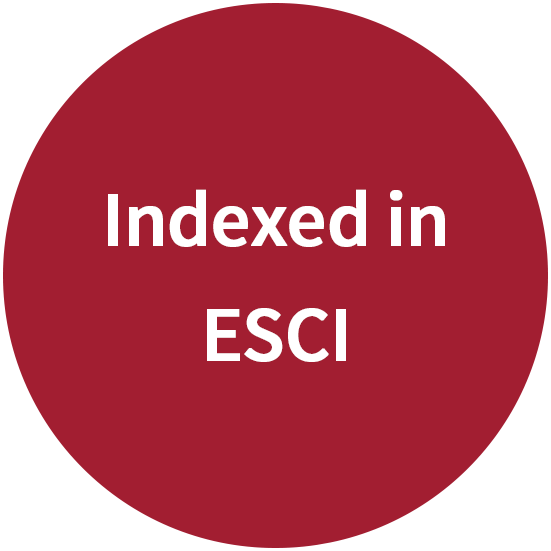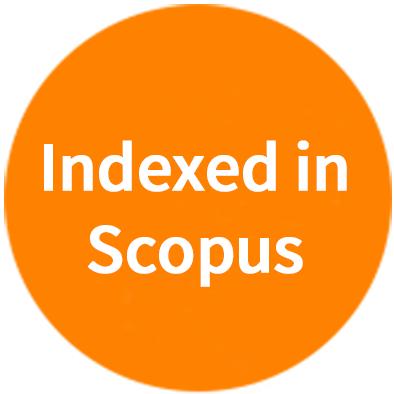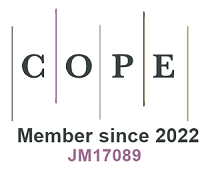REFERENCES
1. Arends M, Wanner C, Hughes D, et al. Characterization of classical and nonclassical fabry disease: a multicenter study. J Am Soc Nephrol 2017;28:1631-41.
2. Desnick RJ, Ioannou YA, Eng CM. α-galactosidase a deficiency: fabry disease. In: The online metabolic and molecular bases of inherited disease. New York: McGraw-Hill Education; 2019. Available from: https://www.donornetworkwest.org/wp-content/uploads/uaga_final_aug09.pdf [Last accessed on 31 Jan 2023]
4. Benjamin ER, Della Valle MC, Wu X, et al. The validation of pharmacogenetics for the identification of Fabry patients to be treated with migalastat. Genet Med 2017;19:430-8.
6. Lenders M, Weidemann F, Kurschat C, et al. Alpha-galactosidase A p.A143T, a non-fabry disease-causing variant. Orphanet J Rare Dis 2016;11:54.
7. Valtola K, Nino-Quintero J, Hedman M, et al. Cardiomyopathy associated with the Ala143Thr variant of the α-galactosidase A gene. Heart 2020;106:609-15.
8. Terryn W, Vanholder R, Hemelsoet D, et al. Questioning the pathogenic role of the GLA p.Ala143Thr “mutation” in fabry disease: implications for screening studies and ERT. JIMD Rep 2013;8:101-8.
9. Warnock DG. 7th Update on fabry disease: biomarkers, progression and treatment opportunities in 2022. Nephron 2022;146 Suppl 1:1-51.
10. Valtola K, Hedman M, Kantola I, et al. Late-onset and classic phenotypes of fabry disease in males with the GLA-Thr410Ala mutation. Open Heart 2023;10:e002251.
11. Santostefano M, Cappuccilli M, Gibertoni D, et al. Fabry disease nephropathy: histological changes with nonclassical mutations and genetic variants of unknown significance. Am J Kidney Dis 2023;82:581-596.e0.
12. Johnson B, Mascher H, Mascher D, et al. Analysis of lyso-globotriaosylsphingosine in dried blood spots. Ann Lab Med 2013;33:274-8.
13. Viall S, Dennis A, Yang A. Newborn screening for fabry disease in oregon: approaching the iceberg of a143t and variants of uncertain significance. Am J Med Genet C Semin Med Genet 2022;190:206-14.
14. Burton BK, Charrow J, Hoganson GE, et al. Newborn screening for lysosomal storage disorders in illinois: the initial 15-month experience. J Pediatr 2017;190:130-5.
15. Macklin S, Laney D, Lisi E, Atherton A, Smith E. The psychosocial impact of carrying a debated variant in the GLA gene. J Genet Couns 2018;27:217-24.
16. Sudhan M, Janakiraman V, Patil R, Oyouni AAA, Hasan Mufti A, Ahmed SSSJ. Asn215Ser, Ala143Thr, and Arg112Cys variants in α-galactosidase A protein confer stability loss in Fabry's disease. J Biomol Struct Dyn 2023;41:9840-9.
17. Braun F, Abed A, Sellung D, et al. Accumulation of α-synuclein mediates podocyte injury in Fabry nephropathy. J Clin Invest 2023;133:e157782.
18. Shen JS, Meng XL, Moore DF, et al. Globotriaosylceramide induces oxidative stress and up-regulates cell adhesion molecule expression in Fabry disease endothelial cells. Mol Genet Metab 2008;95:163-8.
19. Delaleu N, Marti HP, Strauss P, et al. Systems analyses of the fabry kidney transcriptome and its response to enzyme replacement therapy identified and cross-validated enzyme replacement therapy-resistant targets amenable to drug repurposing. Kidney Int 2023;104:803-19.
20. Ryter SW, Lee SJ, Smith A, Choi AM. Autophagy in vascular disease. Proc Am Thorac Soc 2010;7:40-7.
21. Showalter MR, Berg AL, Nagourney A, Heil H, Carraway KL 3rd, Fiehn O. The emerging and diverse roles of bis(monoacylglycero) phosphate lipids in cellular physiology and disease. Int J Mol Sci 2020;21:8067.
22. Hein LK, Duplock S, Fuller M. Selective reduction of bis(monoacylglycero)phosphate ameliorates the storage burden in a THP-1 macrophage model of Gaucher disease. J Lipid Res 2013;54:1691-7.
23. Medoh UN, Hims A, Chen JY, et al. The Batten disease gene product CLN5 is the lysosomal bis(monoacylglycero)phosphate synthase. Science 2023;381:1182-9.
24. Ilnytska O, Lai K, Gorshkov K, et al. Enrichment of NPC1-deficient cells with the lipid LBPA stimulates autophagy, improves lysosomal function, and reduces cholesterol storage. J Biol Chem 2021;297:100813.
25. Chen JYS, Chua D, Lim CO, Ho WX, Tan NS. Lessons on drug development: a literature review of challenges faced in nonalcoholic fatty liver disease (NAFLD) clinical Trials. Int J Mol Sci 2022;24:158.
26. Forrester SJ, Kikuchi DS, Hernandes MS, Xu Q, Griendling KK. Reactive oxygen species in metabolic and inflammatory signaling. Circ Res 2018;122:877-902.
27. Bassoy EY, Walch M, Martinvalet D. Reactive oxygen species: do they play a role in adaptive immunity? Front Immunol 2021;12:755856.
28. Bozic M, Caus M, Rodrigues-Diez RR, et al. Protective role of renal proximal tubular alpha-synuclein in the pathogenesis of kidney fibrosis. Nat Commun 2020;11:1943.
29. Oliveira LM, Falomir-Lockhart LJ, Botelho MG, et al. Elevated α-synuclein caused by SNCA gene triplication impairs neuronal differentiation and maturation in Parkinson's patient-derived induced pluripotent stem cells. Cell Death Dis 2015;6:e1994.
30. Book A, Guella I, Candido T, et al. SNCA Multiplication investigators of the GEoPD consortium. A meta-analysis of α-synuclein multiplication in familial parkinsonism. Front Neurol 2018;9:1021.
31. Nelson MP, Tse TE, O'Quinn DB, et al. Autophagy-lysosome pathway associated neuropathology and axonal degeneration in the brains of alpha-galactosidase A-deficient mice. Acta Neuropathol Commun 2014;2:20.
32. Bangari DS, Ashe KM, Desnick RJ, et al. α-galactosidase A knockout mice: progressive organ pathology resembles the type 2 later-onset phenotype of fabry disease. Am J Pathol 2015;185:651-65.
33. Noben-Trauth K, Neely H, Brady RO. Normal hearing in alpha-galactosidase A-deficient mice, the mouse model for fabry disease. Hear Res 2007;234:10-4.
34. Schiffmann R, Hughes DA, Linthorst GE, et al. Conference Participants. Screening, diagnosis, and management of patients with fabry disease: conclusions from a "kidney disease: improving global outcomes" (KDIGO) controversies conference. Kidney Int 2017;91:284-93.
35. Schiffmann R. Enzyme replacement in fabry disease: the essence is in the kidney. Ann Intern Med 2007;146:142-4.
36. Suarez MLG, Thongprayoon C, Hansrivijit P, et al. Outcomes of kidney transplantation in fabry disease: a meta-analysis. Diseases 2020;9:2.
37. Pieroni M, Moon JC, Arbustini E, et al. Cardiac involvement in fabry disease: JACC review topic of the week. J Am Coll Cardiol 2021;77:922-36.
38. Moore DF, Kaneski CR, Askari H, Schiffmann R. The cerebral vasculopathy of fabry disease. J Neurol Sci 2007;257:258-63.
39. Burand AJ Jr, Stucky CL. Fabry disease pain: patient and preclinical parallels. Pain 2021;162:1305-21.
40. Orsborne C, Black N, Naish JH, et al. Disease-specific therapy for the treatment of the cardiovascular manifestations of fabry disease: a systematic review. Heart 2024;110:19-26.
41. Germain DP, Elliott PM, Falissard B, et al. The effect of enzyme replacement therapy on clinical outcomes in male patients with Fabry disease: a systematic literature review by a European panel of experts. Mol Genet Metab Rep 2019;19:100454.
42. Ramaswami U, Beck M, Hughes D, et al. FOS Study Group. Cardio- renal outcomes with long- term agalsidase alfa enzyme replacement therapy: a 10- year fabry outcome survey (FOS) analysis. Drug Des Devel Ther 2019;13:3705-15.
43. Nordin S, Kozor R, Vijapurapu R, et al. Myocardial storage, inflammation, and cardiac phenotype in fabry disease after one year of enzyme replacement therapy. Circ Cardiovasc Imaging 2019;12:e009430.
44. Shen JS, Busch A, Day TS, et al. Mannose receptor-mediated delivery of moss-made α-galactosidase A efficiently corrects enzyme deficiency in fabry mice. J Inherit Metab Dis 2016;39:293-303.
45. Lenders M, Brand E. Mechanisms of neutralizing anti-drug antibody formation and clinical relevance on therapeutic efficacy of enzyme replacement therapies in fabry disease. Drugs 2021;81:1969-81.
46. Nowak A, Dormond O, Monzambani V, Huynh-Do U, Barbey F. Agalsidase-β should be proposed as first line therapy in classic male fabry patients with undetectable α-galactosidase A activity. Mol Genet Metab 2022;137:173-8.
47. Schiffmann R, Swift C, Wang X, Blankenship D, Ries M. A prospective 10-year study of individualized, intensified enzyme replacement therapy in advanced fabry disease. J Inherit Metab Dis 2015;38:1129-36.
48. Chiesi Global Rare Diseases and Protalix BioTherapeutics Announce FDA Approval of ELFABRIO® (pegunigalsidase alfa-iwxj) for the Treatment of Fabry Disease. Available from: https://www.prnewswire.com/news-releases/chiesi-global-rare-diseases-and-protalix-biotherapeutics-announce-fda-approval-of-elfabrio-pegunigalsidase-alfa-iwxj-for-the-treatment-of-fabry-disease-301820680.html [Last accessed on 18 Jan 2024].
49. European Medicines Agency. Homepage. Available from: https://www.ema.europa.eu/en/homepage [Last accessed on 18 Jan 2024].
50. Schiffmann R, Goker-Alpan O, Holida M, et al. Pegunigalsidase alfa, a novel PEGylated enzyme replacement therapy for Fabry disease, provides sustained plasma concentrations and favorable pharmacodynamics: a 1-year Phase 1/2 clinical trial. J Inherit Metab Dis 2019;42:534-44.
51. Wallace E, Goker-alpan W, Holida B, et al. First results of a head-to-head trial of pegunigalsidase alfa vs. agalsidase beta in Fabry disease: 2 year results of the phase 3 randomized, double-blind, BALANCE study. Mol Genet Metab 2023;138:107351.
52. Baba M, Shimbo T, Horio M, et al. Longitudinal study of the decline in renal function in healthy subjects. PLoS One 2015;10:e0129036.
53. McCambridge J, Witton J, Elbourne DR. Systematic review of the hawthorne effect: new concepts are needed to study research participation effects. J Clin Epidemiol 2014;67:267-77.
54. Bernat J, Holida MD, Longo N, et al. Long-term safety and efficacy of pegunigalsidase alfa administered every 4 weeks in patients with Fabry disease: Two-year interim results from the ongoing phase 3 BRIGHT51 open-label extension study. Mol Genet Metab 2023;138:107027.
55. Wu YS, Khanna R, Schmith V, et al. Migalastat tissue distribution: extrapolation from mice to humans using pharmacokinetic modeling and comparison with agalsidase beta tissue distribution in mice. Clin Pharmacol Drug Dev 2021;10:1075-88.
56. Johnson FK, Valenzano K, Castelli J. Comparison of integrated white blood cell alpha-galactosidase a activity exposure between every-other-day orally administered migalastat and biweekly infusions of agalsidase beta or agalsidase alfa. Mol Genet Metab 2016;117:S63.
57. Müntze J, Gensler D, Maniuc O, et al. Oral Chaperone therapy migalastat for treating fabry disease: enzymatic response and serum biomarker changes after 1 year. Clin Pharmacol Ther 2019;105:1224-33.
58. Germain DP, Hughes DA, Nicholls K, et al. Treatment of fabry's disease with the pharmacologic chaperone migalastat. N Engl J Med 2016;375:545-55.
59. Gilchrist M, Casanova F, Tyrrell JS, et al. Prevalence of fabry disease-causing variants in the UK Biobank. J Med Genet 2023;60:391-6.
60. Lavalle L, Thomas AS, Beaton B, et al. Phenotype and biochemical heterogeneity in late onset fabry disease defined by N215S mutation. PLoS One 2018;13:e0193550.
61. Lenders M, Stappers F, Brand E. In vitro and in vivo amenability to migalastat in fabry disease. Mol Ther Methods Clin Dev 2020;19:24-34.
62. Modrego A, Amaranto M, Godino A, Mendoza R, Barra JL, Corchero JL. Human α-galactosidase a mutants: priceless tools to develop novel therapies for fabry disease. Int J Mol Sci 2021;22:6518.
63. Bichet DG, Aerts JM, Auray-Blais C, et al. Assessment of plasma lyso-Gb3 for clinical monitoring of treatment response in migalastat-treated patients with Fabry disease. Genet Med 2021;23:192-201.
64. Deegan PB, Goker-Alpan O, Geberhiwot T, et al. Venglustat, an orally administered glucosylceramide synthase inhibitor: assessment over 3 years in adult males with classic Fabry disease in an open-label phase 2 study and its extension study. Mol Genet Metab 2023;138:106963.
65. Guérard N, Oder D, Nordbeck P, et al. Lucerastat, an iminosugar for substrate reduction therapy: tolerability, pharmacodynamics, and pharmacokinetics in patients with fabry disease on enzyme replacement. Clin Pharmacol Ther 2018;103:703-11.
66. Weiss AC. Idorsia announces the results of MODIFY, a Phase 3 study of lucerastat in Fabry disease. Available from: https://ml-eu.globenewswire.com/Resource/Download/ba4842fd-18bd-4873-97d2-cd73bc3a7371 [Last accessed on 18 Jan 2024].
67. Shemesh E, Deroma L, Bembi B, et al. Enzyme replacement and substrate reduction therapy for Gaucher disease. Cochrane Database Syst Rev 2015;2015:CD010324.
68. Jabbarzadeh-Tabrizi S, Boutin M, Day TS, et al. Assessing the role of glycosphingolipids in the phenotype severity of fabry disease mouse model. J Lipid Res 2020;61:1410-23.
69. Lakomá J, Rimondini R, Ferrer Montiel A, Donadio V, Liguori R, Caprini M. Increased expression of Trpv1 in peripheral terminals mediates thermal nociception in Fabry disease mouse model. Mol Pain 2016;12:174480691666372.
70. Burlina AP, Sims KB, Politei JM, et al. Early diagnosis of peripheral nervous system involvement in Fabry disease and treatment of neuropathic pain: the report of an expert panel. BMC Neurol 2011;11:61.
71. Kuzmin DA, Shutova MV, Johnston NR, et al. The clinical landscape for AAV gene therapies. Nat Rev Drug Discov 2021;20:173-4.
72. Rodríguez-Márquez E, Meumann N, Büning H. Adeno-associated virus (AAV) capsid engineering in liver-directed gene therapy. Expert Opin Biol Ther 2021;21:749-66.
73. Yasuda M, Huston MW, Pagant S, et al. AAV2/6 gene therapy in a murine model of fabry disease results in supraphysiological enzyme activity and effective substrate reduction. Mol Ther Methods Clin Dev 2020;18:607-19.
74. Sharma A, Ghosh A, Hansen ET, Newman JM, Mohan RR. Transduction efficiency of AAV 2/6, 2/8 and 2/9 vectors for delivering genes in human corneal fibroblasts. Brain Res Bull 2010;81:273-8.
75. Hopkin RJ, Ganesh J, Deegan P, et al. STAAR, a phase I/II study of isaralgagene civaparvovec (ST-920) gene therapy in adults with Fabry disease: Dose escalation phase results. Mol Genet Metab 2023;138:107152.
76. Romano R, Park H, Pios A, Brennan T, Selby MJ, Boyle K. Development of a B cell protein factory to produce sustained therapeutic levels of alpha-galactosidase A for the treatment of Fabry disease. Mol Genet Metab 2023;138:107298.
77. Schiffmann R, Goker-Alpan O, Vockley G, et al. Cardiac effects of 4D-310 in adults with fabry disease in a phase 1/2 clinical trial: functional, quality of life, and imaging endpoints in patients with 12 months of follow up. Available from: https://www.cgtlive.com/view/fabry-disease-gene-therapy-demonstrates-clinically-meaningful-improvements [Last accessed on 18 Jan 2024].
78. Khan A, Barber DL, Huang J, et al. Lentivirus-mediated gene therapy for fabry disease. Nat Commun 2021;12:1178.








